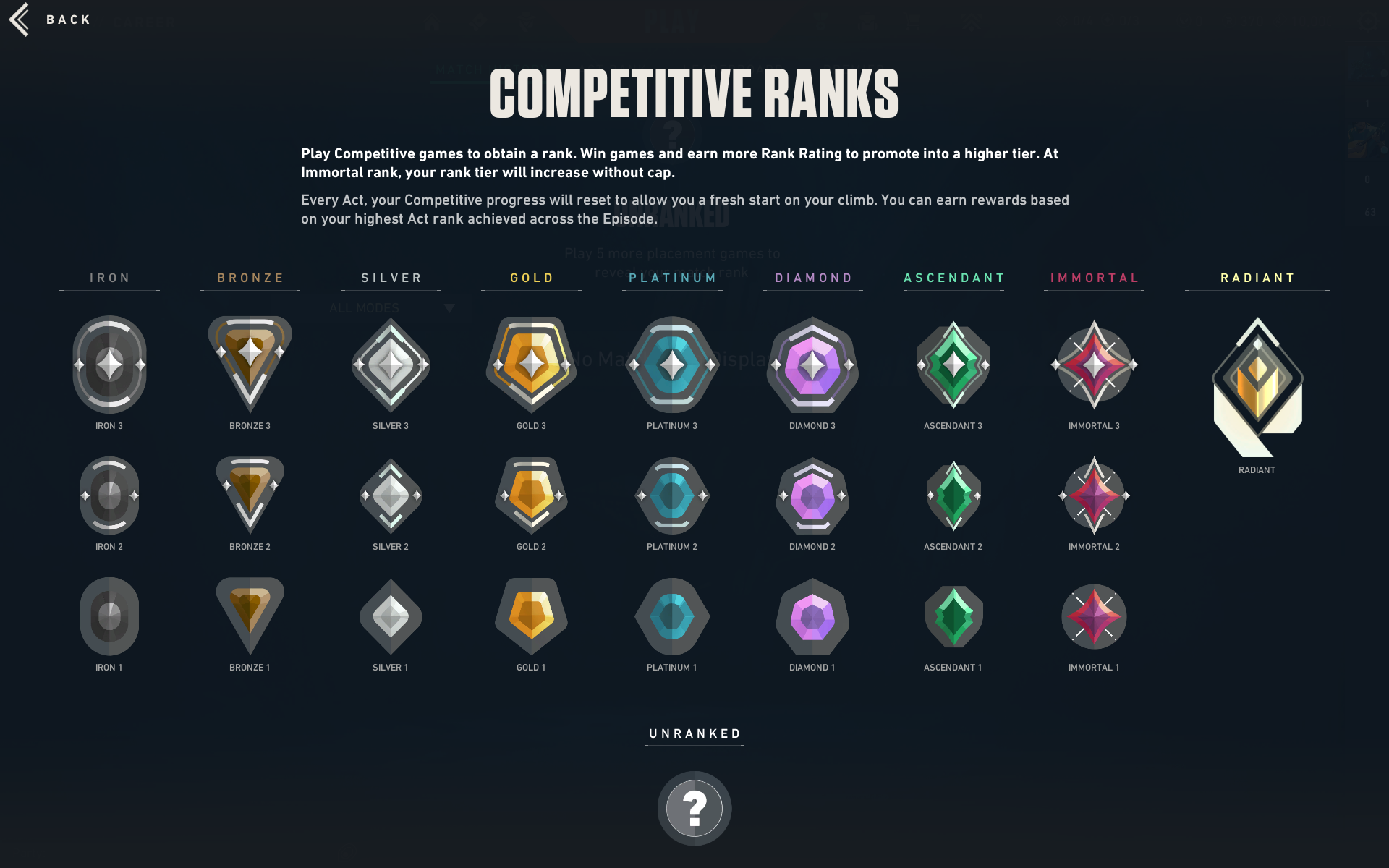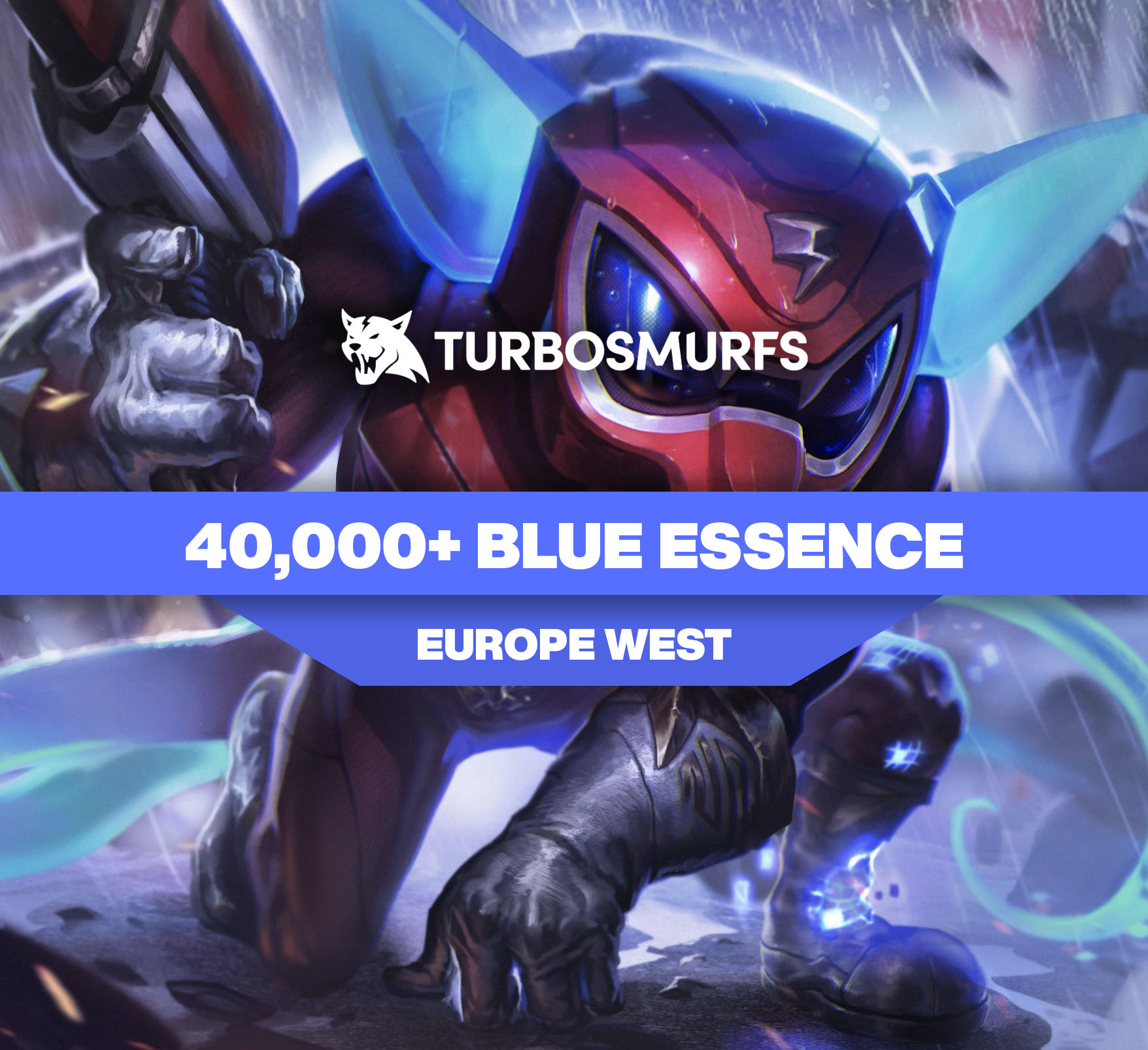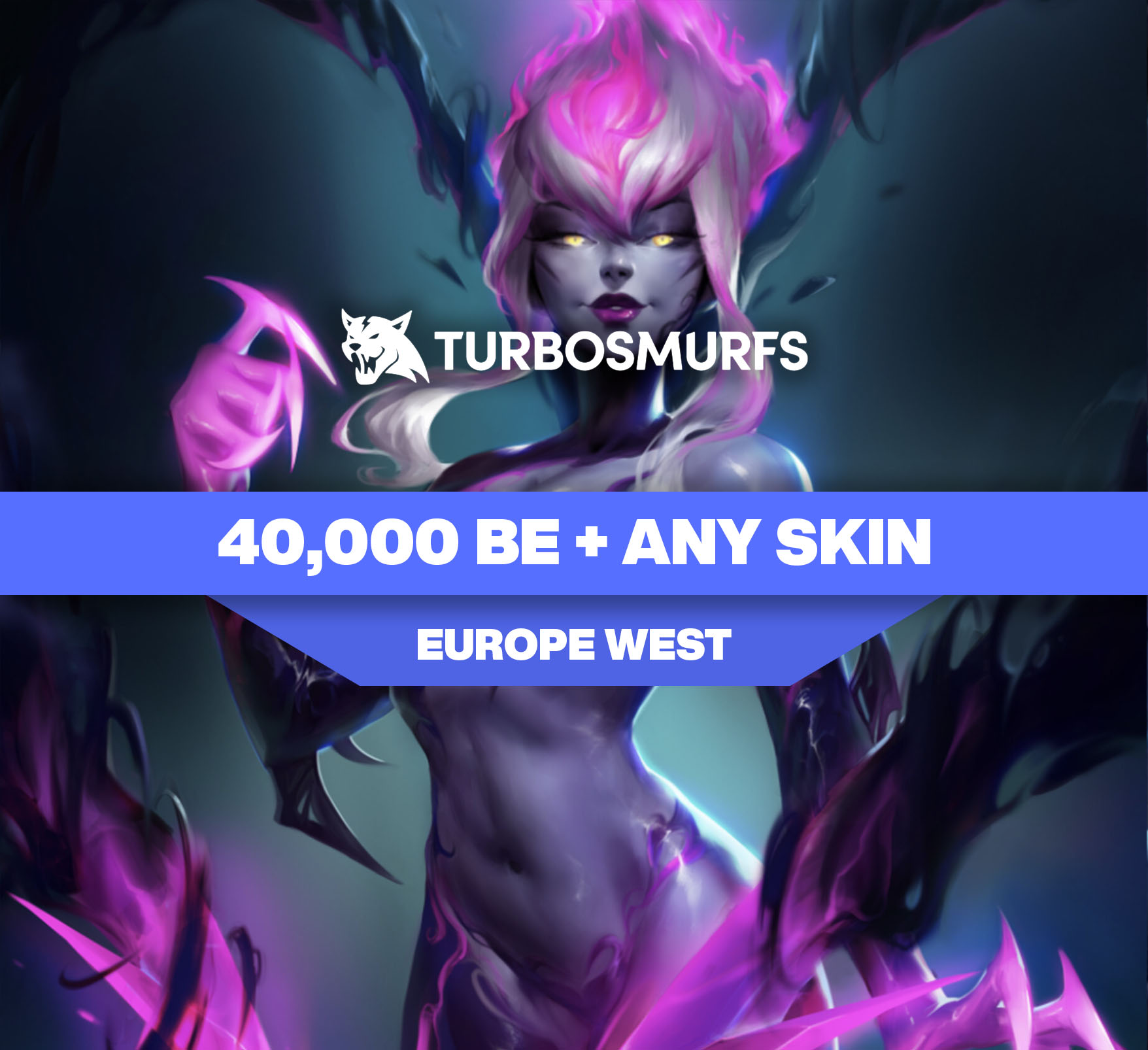
2025 Valorant Rank System Explained

Did you know only 0.04% of players reach the top Radiant tier in Valorant? This group is at the top of the skill in a very competitive game. The competitive hierarchy in this tactical FPS has changed a lot for 2025. It now has clearer paths to get better while staying tough.
The journey through the competitive tiers in Valorant goes from Iron to Radiant. Most ranks are split into three levels. This setup helps place you with others of similar skill. Before you can play competitively, you must reach Account Level 20. This ensures everyone knows the basics.
Riot Games has updated the matchmaking algorithm for 2025. It now focuses more on how well each player does in matches. This helps new and returning players find their true skill level quicker.
In this guide, we'll explain how Rating Points work and what affects your rank. We'll also share strategies to climb the competitive ladder more efficiently. Whether you're starting out or trying to improve, knowing these mechanics is key to getting better.
Key Takeaways
- Only 0.04% of players reach the Radiant rank, making it truly exclusive
- Most competitive tiers have three divisions (1-3) to show progression
- Account Level 20 is required before accessing Competitive Mode
- The 2025 system places greater emphasis on individual performance
- Rank disparity rules limit who can queue together based on skill gaps
- Five placement matches determine your initial rank at the start of each episode
The Complete Valorant Rank System Overview for 2025
The 2025 Valorant rank system brings strategic changes to balance play for all skill levels. Riot Games is refining the competitive framework that has made Valorant a top tactical shooter in esports. Knowing these mechanics is key for meaningful progress in valorant ranked play, whether you're starting or aiming for Radiant.
Core Mechanics of Competitive Play
To start ranked matches, you need to reach Account Level 20. This ensures players know the game well before competing. It keeps match quality high by confirming players grasp basic mechanics and agent abilities.
The ranking system has two tracks: your visible rank and your hidden MMR. Your visible rank goes from Iron to Radiant, with three divisions in most tiers (e.g., Gold 1, Gold 2, Gold 3). This tiered structure helps you see your progress through the Valorant rank distribution.
Winning isn't the only thing that matters. The system looks at combat score, economic management, and objective control. This means great personal performance can help even if you lose, and poor performance might lower your win rewards.
Major Updates in the 2025 Season
The biggest change in 2025 is a new matchmaking algorithm. It focuses on team balance over quick matches. This change aims to make games more even, even if it means waiting a bit longer to play.
Riot has also tweaked rank distribution targets. They've made Diamond and Ascendant tiers a bit bigger and made Immortal and Radiant harder to get into. This change aims to better show skill differences at the top levels, making these ranks truly special.
The Act Rank system now gives more detailed insights into your performance. It tracks your highest-ranked win and shows trends across maps and agents. This helps you focus on improving specific areas, not just your overall rank. These valorant rank changes in 2025 show Riot's dedication to fair play and player growth.
All Valorant Rank Tiers and Divisions Explained

The 2025 Valorant competitive scene has nine rank tiers. These tiers separate players by skill and performance. Each tier, except Radiant, has three divisions, making 25 ranks in total. This system helps players know where they stand and who they play against.
Iron, Bronze, and Silver Tiers
The Iron, Bronze, and Silver tiers are for beginners. Iron ranks (1-3) are for new players learning the game. They struggle with aiming and basic tactics.
Bronze divisions (1-3) show small improvements. Players start to manage their economy and team strategies better. About 15% of players are in these tiers.
Silver ranks (1-3) make up a big part of the community. Silver 1 has 9.06% of players. Players here aim better and know the maps, but consistency is hard.
Gold, Platinum, and Diamond Ranks
The mid-tier ranks show more skill and knowledge. Gold divisions (1-3) have a lot of players, with Gold 1 at 8.81%. Players here have solid basics and use utilities well.
Platinum ranks (1-3) are the upper-middle segment. Players here aim well, communicate, and strategize. Teamwork is key at this level.
Diamond divisions (1-3) are for advanced players. They have refined skills, good game sense, and adapt strategies. Only about 10% of players reach Diamond or higher.
Ascendant, Immortal, and Radiant Elite Tiers
The elite tiers are for the best players. Ascendant ranks (1-3) are a bridge between Diamond and Immortal. Players here have top-notch skills and tactics.
Immortal divisions (1-3) are for the top 1% of players. They have near-professional skills. Gameplay is precise and strategic.
Radiant is the highest rank for the top 500 players. It's 0.05% of the player base. It includes pros and dedicated players.
Visual Guide to 2025 Rank Icons
The 2025 Valorant rank icons show player progress. Each tier has its own color, from dark to bright. The icons get more detailed as players advance.
How MMR Works Behind the Scenes

The secret engine behind Valorant's competitive matchmaking is called the MMR system. It works quietly, hidden from your view. While you focus on climbing ranks, Riot's algorithms are checking your true skill level. Knowing how this system works can help you understand your competitive journey better.
MMR, or Matchmaking Rating, is Valorant's way to measure your skill. It aims to match players of similar skill levels, even if their visible rank doesn't show it. This hidden system decides who you play with and against in competitive mode.
Visible Rank vs. Hidden MMR Explained
Your visible rank in Valorant shows your progress through the competitive system. But, it doesn't always match your hidden MMR. This gap explains why you might face opponents who seem better or worse than your rank.
The rank you see is for progression and rewards. It changes based on wins and losses, with some influence from your performance. Your visible rank is what everyone sees, showing your competitive standing.
Your hidden MMR is Riot's true skill assessment. It changes more subtly and considers more factors. When your MMR is higher than your visible rank, you gain more RR points for wins and lose less for losses. This helps you climb faster to your "true" skill tier.
This is why you might gain 25+ RR for a win but lose only 15 RR for a defeat. The system thinks you belong in a higher tier. If your MMR is lower, you'll gain less and lose more until they align. You can learn more about ranks and matchmaking in Valorant's rank system.
Key Factors That Influence Your MMR Calculation
Valorant's MMR system looks at many performance metrics to find your true skill level. Win-loss record is the most important factor. Winning against skilled opponents shows your ability, no matter your stats.
Your performance in individual matches also matters. This includes your combat score, kill-death ratio, assists, utility usage, and economic efficiency. The system values these differently based on your agent role.
The quality of your opponents affects MMR adjustments. Beating higher-rated players boosts your MMR more than winning against lower-rated ones. Losing to top-tier players doesn't hurt your rating as much as losing to lower-ranked ones.
Consistency in matches is key. The system values players who perform well over time more than those with occasional great games. Recent performances are given more weight, allowing the system to adjust to your skill growth.
Characteristic | Visible Rank | Hidden MMR | Impact on Gameplay |
| Visibility | Public, displayed on profile | Completely hidden from players | Creates transparency vs. accuracy balance |
| Change Rate | Changes by specific RR amounts | Adjusts more gradually and subtly | Prevents wild rank fluctuations |
| Primary Purpose | Progression and rewards | Matchmaking accuracy | Ensures competitive match balance |
| Performance Factors | Primarily wins/losses with some performance bonuses | Complex algorithm including performance metrics, consistency, and opposition quality | Creates more nuanced skill assessment |
| Reset Behavior | Soft reset between Acts | More stable between seasons | Maintains matchmaking quality during transitions |
Rank Rating (RR) and Progression Mechanics
The Rank Rating system is key in Valorant's competitive structure. It's a points-based system that guides your rank progress. This clear system lets players see their journey and know what's needed to move up. The RR system, along with hidden MMR, balances the game, rewarding skill and consistency.
The RR Point System and Rank Thresholds
Starting a new rank in Valorant gives you 50 Rank Rating points. Your goal is to hit 100 RR to move up. For example, reaching 100 RR in Bronze 2 means you start Bronze 3 with 50 RR.
Each rank has a 0-100 RR scale, making progress clear from Iron to Immortal. But the highest competitive ranks change. Immortal and above use a leaderboard, where your RR number shows your rank among the best.
After each match, you get instant feedback on your rank. This is key for tracking your valorant rank progression over time.
Win/Loss Impact on Your Rank Rating
Winning matches is the best way to gain RR. Wins can give you 10-25 RR points, while losses take away a similar amount. But, these values can change based on the valorant ranking system.
Beating a team with a much higher MMR can give you more RR. Losing to a lower-rated team will cost you more RR, as it's expected you should win.
Match score also affects RR changes. A big win, like 13-3, will give more points than a close win, like 13-11, showing your dominance.
Performance Bonuses and Penalties
Your performance in matches can also affect RR. The system looks at your combat stats, utility use, and objective control. This determines if you get a bonus RR.
In lower tiers, like Iron to Gold, these bonuses can add 3-6 RR points for great play. This helps skilled players move up faster, avoiding being stuck in lower ranks.
As you get to Platinum and above, these bonuses get smaller. By Diamond and higher, team wins are more important for RR. This shows that Valorant at high levels is a team game, where teamwork and strategy matter more than individual skills.
The system also gives small RR penalties for underperforming. This helps players find a competitive tier that matches their skill level.
Understanding Seasonal Rank Resets
Seasonal rank resets are key in Valorant's competitive world. They refresh the ranked ladder at key times in 2025. This keeps the competitive environment lively and fair. Knowing when these resets happen helps you get ready and improve your rank.
Episode and Act Transitions in 2025
Valorant's competitive calendar is split into Episodes and Acts. Each change impacts your rank in different ways. Episodes are big updates, lasting 6 months with three Acts of 2 months each.
In 2025, the Valorant rank system will have Episodes 8 and 9. At these times, your rank will reset completely. You'll need to start over to show your skills. Between Acts, your rank stays mostly the same.
Valorant doesn't let your rank drop if you're not playing. But your hidden MMR can change if you're away for a long time. This means your skills might seem different after a reset. Coming back after a long break, your first matches will really count.
Placement Matches and Rank Calibration Process
The 2025 Valorant rank changes keep the same placement match system but with some tweaks. At the start of each Episode, you'll play five placement matches to set your rank. These matches look at your past MMR and your current play.
For Acts 2 and 3, you only need one placement match to adjust your rank. This makes it easier to keep your rank in line with your recent play. It also gives you a chance to show your skills.
Many players find they start a bit lower after resets. This is on purpose. It lets you climb quickly if you play well. It also keeps the higher ranks fair by not letting anyone jump up too fast.
Transition Type | Placement Matches | Rank Impact | MMR Consideration |
| New Episode | 5 matches | Complete reset | Previous MMR + current performance |
| New Act (same Episode) | 1 match | Minor adjustment | Recent performance weighted heavily |
| After Extended Break | Standard amount | Potential downward shift | Accounts for skill deterioration |
| Rank Promotion | None required | Immediate advancement | Based on RR thresholds |
Proven Strategies to Climb Each Rank Tier

To move up in Valorant's ranks, you need strategies for each level. What gets you out of Iron won't get you into Immortal. Let's look at proven ways to climb the valorant rank progression ladder, focusing on what works at each level.
Iron to Gold Climbing Tactics
At lower ranks, focus on basic skills. Keep your crosshair at head level to improve your aim. Spend 15-20 minutes daily practicing recoil control and flick shots.
Managing your credits is key. Learn when to save, when to buy, and when to invest fully. Many players waste credits or don't coordinate with their team.
Knowing the maps is important. Learn common angles, callouts, and post-plant spots. Focus on 2-3 maps well, not being okay on all. Adjusting your sensitivity can also help your aim.
Platinum to Ascendant Advancement Techniques
At Platinum, aim alone won't get you ahead. Using the utility wisely is key. Practice using your agent's abilities with your team. A well-timed flash or smoke can win rounds better than aim.
Improve your mid-round decisions by watching pros. Notice how they adapt when plans fail. Record and review your games to spot patterns that lead to losses.
Good communication is vital at this level of valorant competitive ranks. Make clear, specific calls and lead your team when needed. Many players have great mechanics but struggle to climb because they don't share information well.
Breaking into Immortal and Radiant
Getting to Immortal takes a lot of work. Focus on one role in your team. Whether it's entry fragging, supporting, or anchoring sites, being specialized helps you perform well.
Learn counter-strategies for common setups. Top-tier valorant ranked play is like chess, with teams adapting to each other. Review opponents' patterns and share adjustments with your team.
Mental strength is key at this level. Learn to stay focused after losing and develop routines for high-pressure games.
Optimal Agent Selection by Rank
In lower ranks (Iron-Gold), duelists like Reyna and Phoenix can carry games. Controllers like Brimstone offer useful utility even with little team coordination.
For Platinum through Ascendant, flexible agents like Omen, Killjoy, and Sova are valuable. They reward strategic thinking and can impact rounds even with imperfect aim.
At Immortal and Radiant, choose agents that fit your team and counter the enemy. Meta agents change with patches, but mastering one agent in each role is better than following trends.
The Mental Approach to Rank Improvement
Your mindset is key in the valorant rank progression journey. Success in competitive gaming is not just about skill. It also needs psychological strength and a growth mindset.
When you're climbing the valorant ranks, focus on getting better, not just your rank. Look at your skill growth, not just RR points. This way, you won't get too upset during losing streaks.
It's important to manage tilt for consistent play. Take short breaks between matches to clear your mind. Watch your gameplay on VODs to spot areas for improvement.
Playing with regular teammates is better than solo queuing. Good communication and teamwork can boost your performance in all ranks. Many players see their rank improve when they play with a team.
Ranked anxiety is common among players. To deal with it, have a pre-game routine to calm your nerves. Remember, each match is a chance to learn, not just a test of your worth.
Celebrate small wins on your rank journey. Acknowledge improvements in skills like resource management or making quick decisions. With consistent practice and the right mindset, your rank will improve with your skills.

